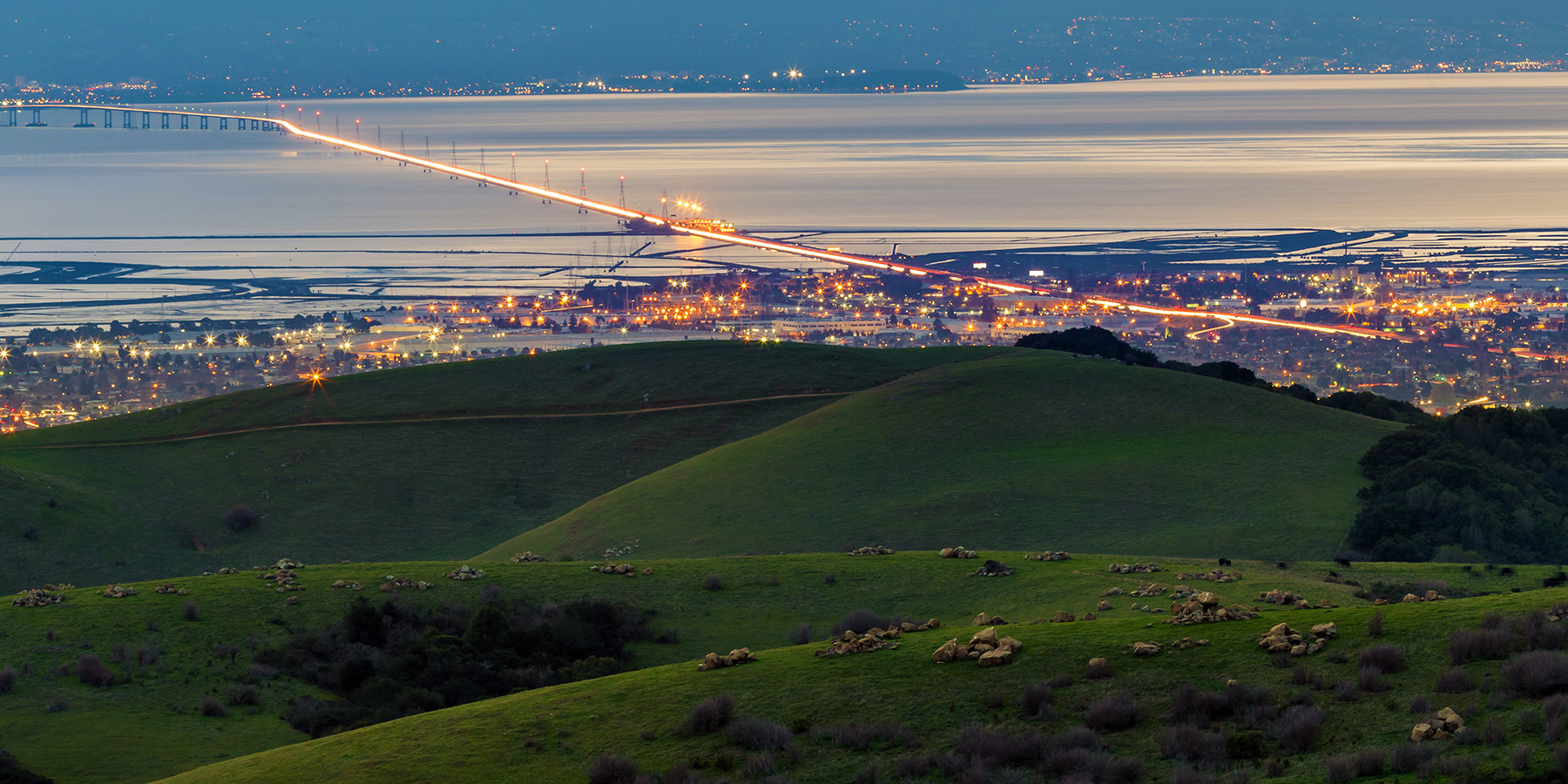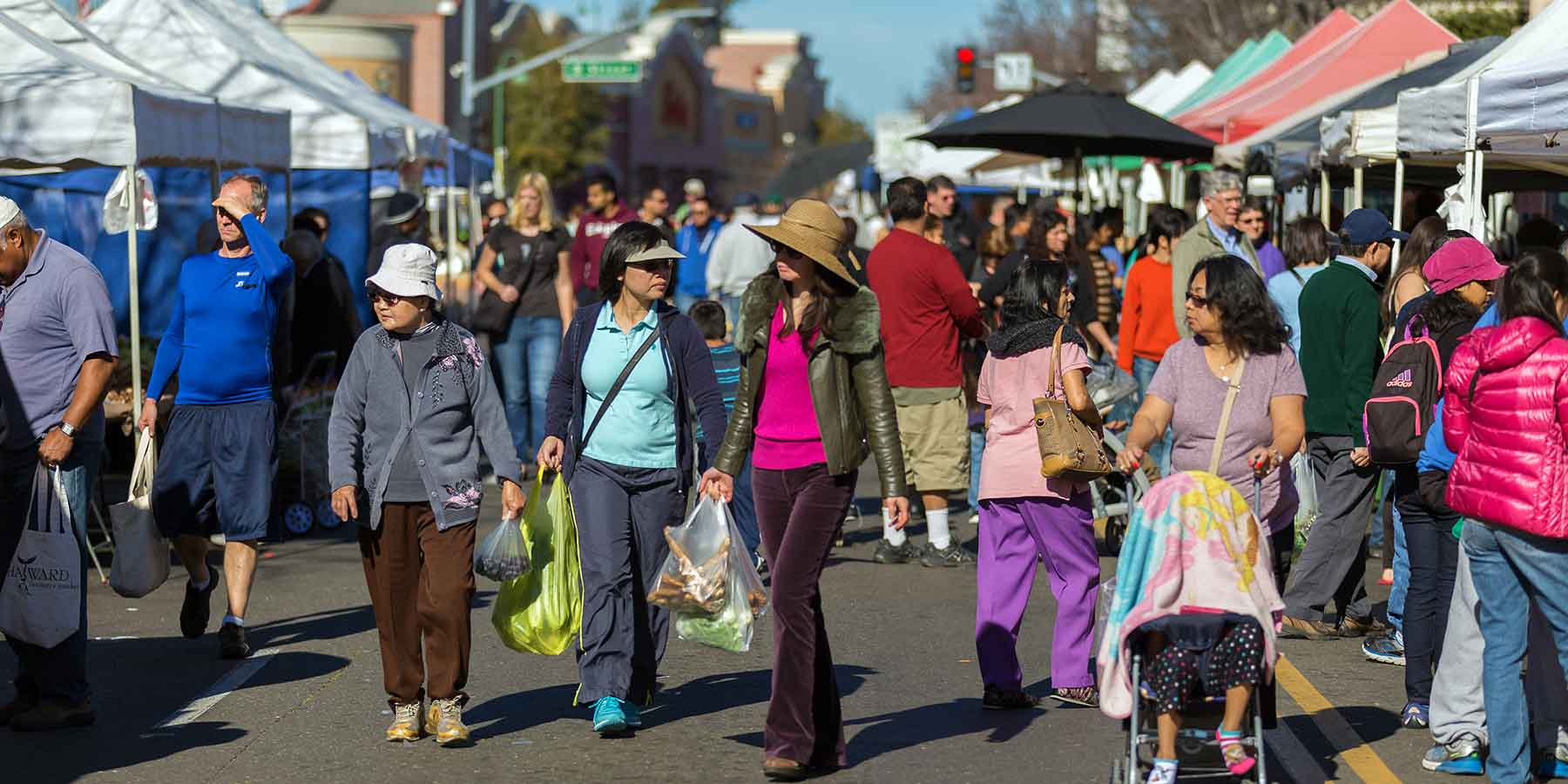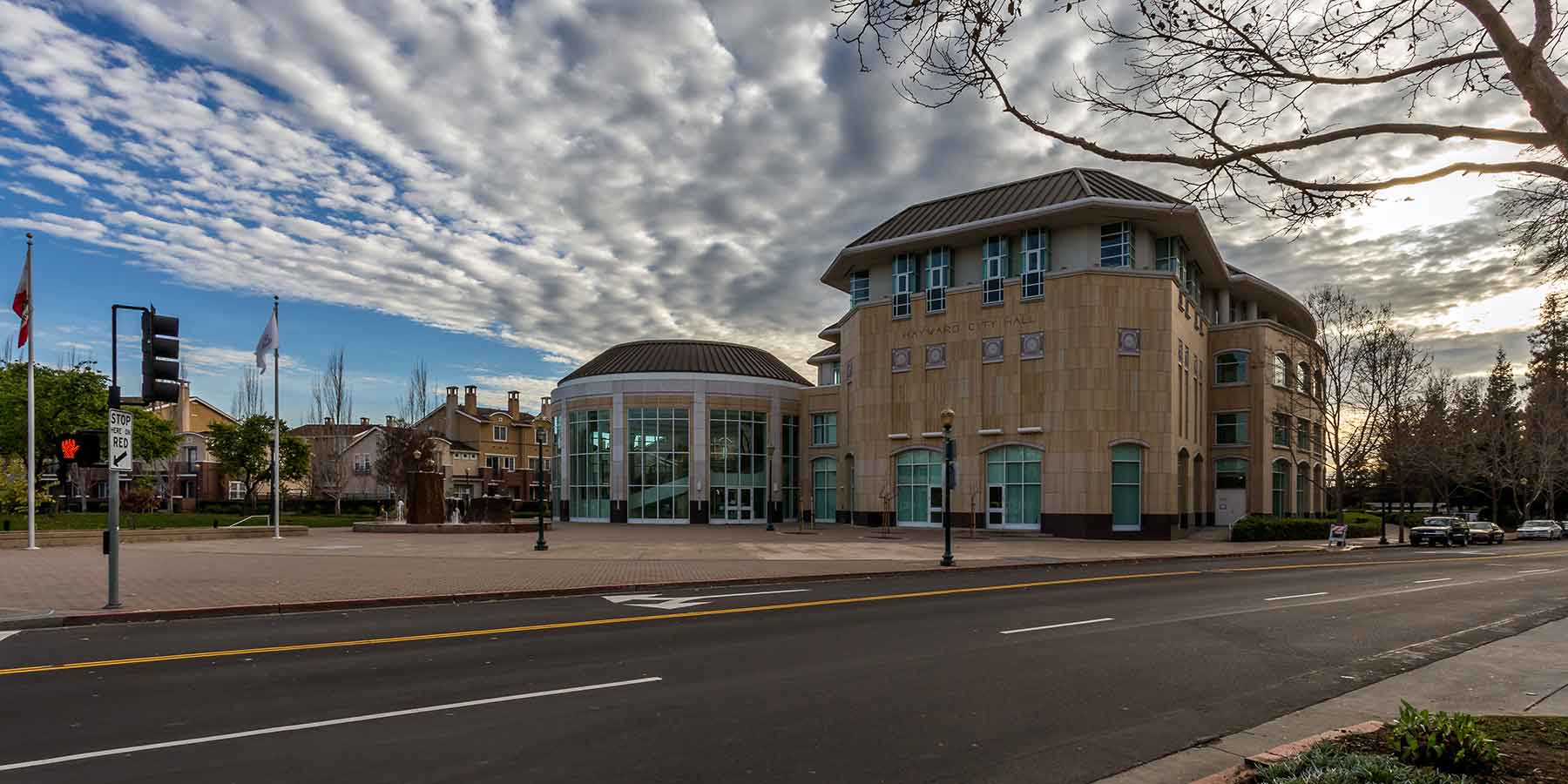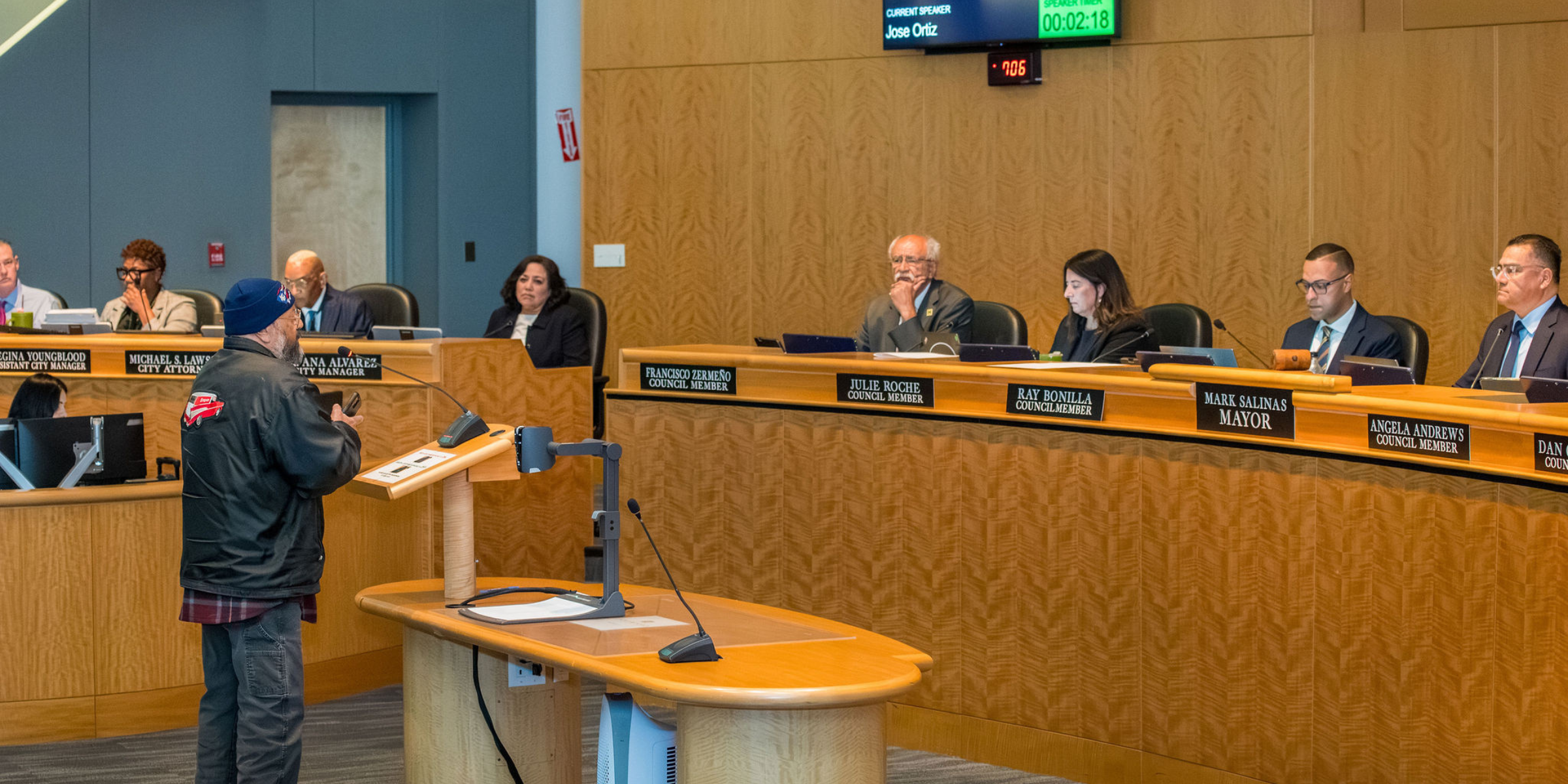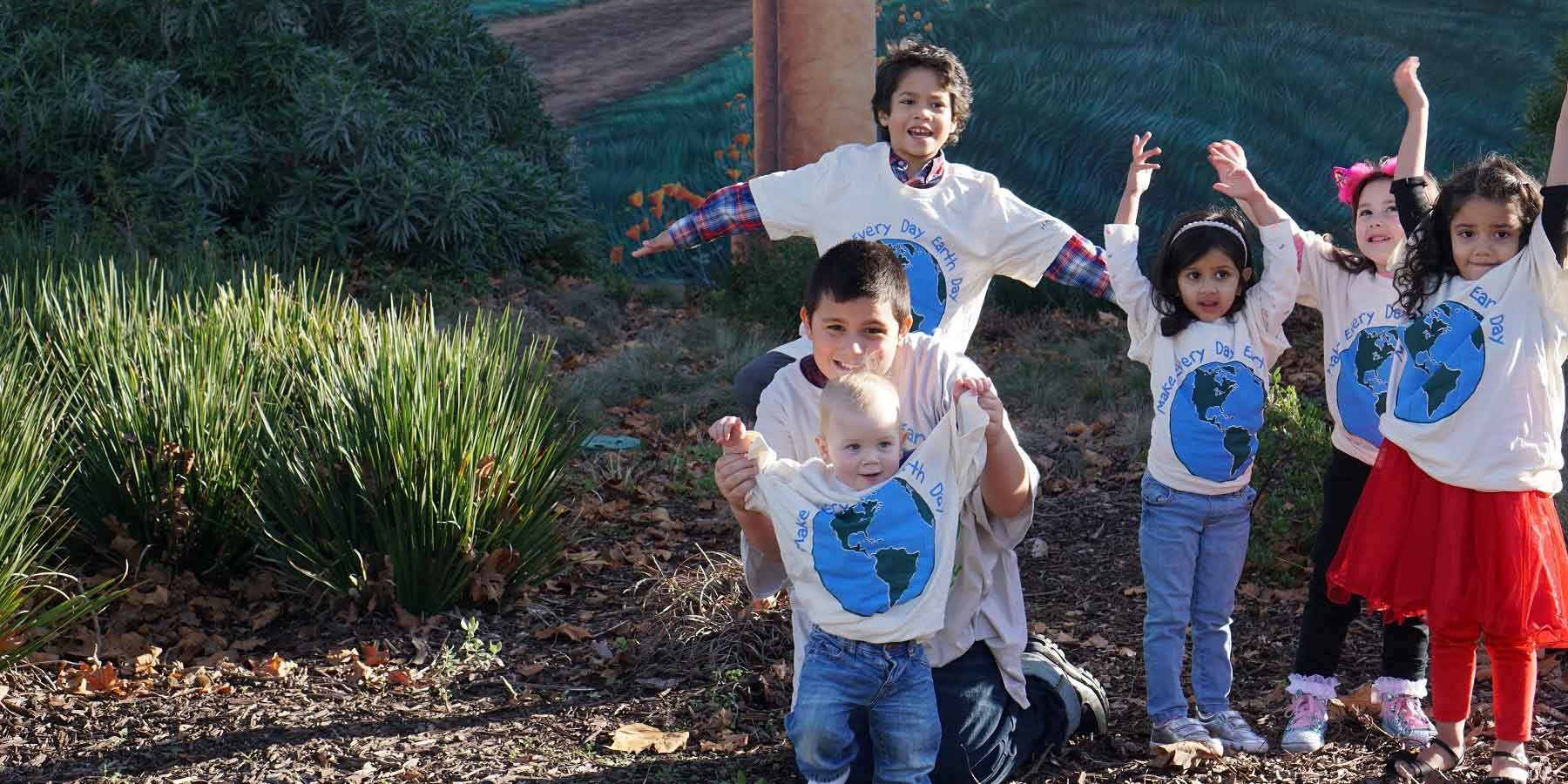Natural Resources Element
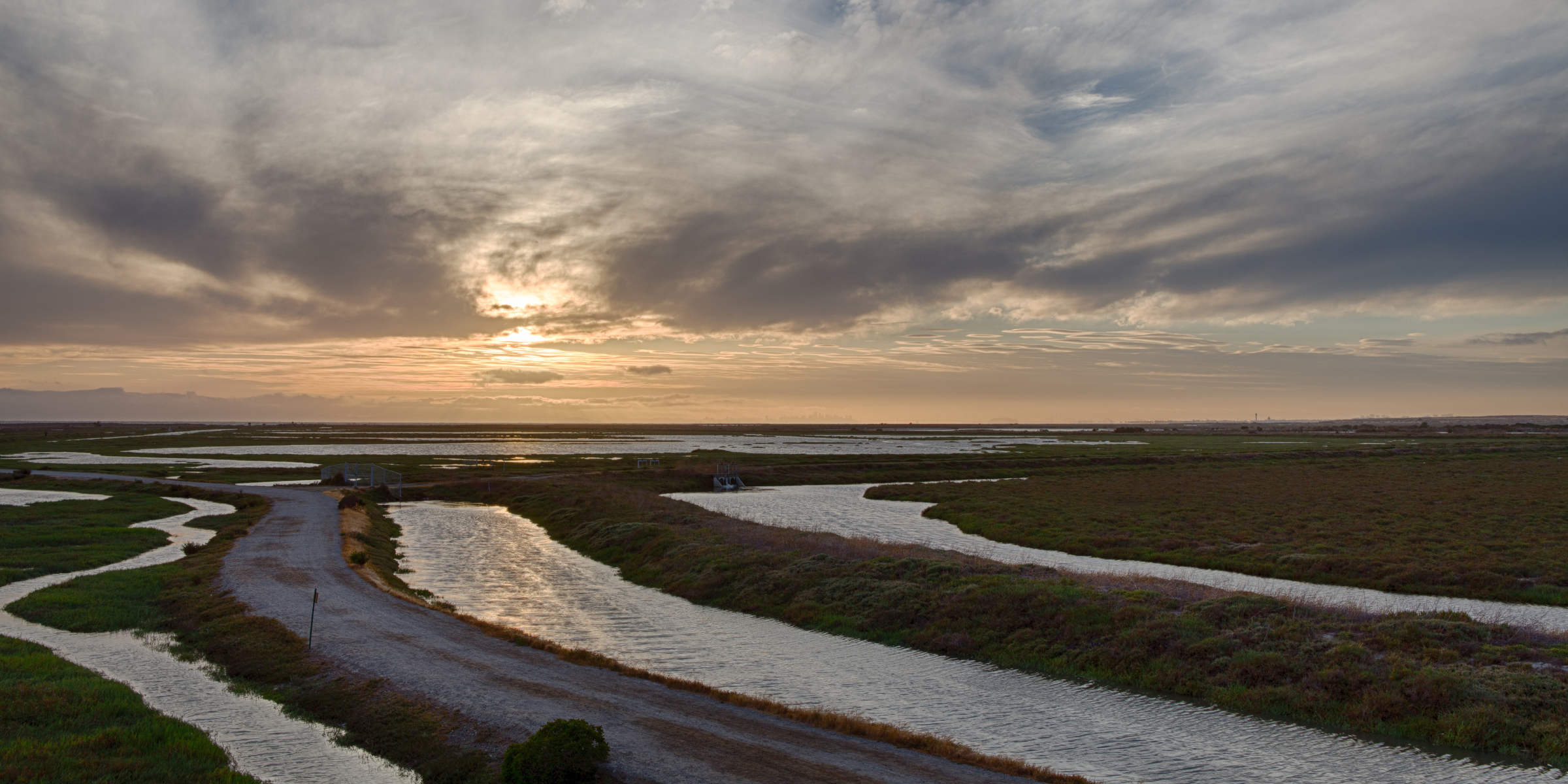
The Hayward community places a high value on its natural resources and is committed to the preservation and enhancement of its baylands, hillsides, and creek and open space corridors. These natural resources provide habitat for a variety of plant and animal species, function as part of the Pacific Flyway for migratory birds, contribute to the ecological health of the San Francisco Bay, and provide residents and visitors with opportunities to exercise, enjoy nature, and view scenic resources. Water and air are also important natural resources that are critical to sustaining a healthy population and growing economy. Improving air and water quality, conserving water and energy resources, reducing greenhouse gas emissions, and supporting renewable energy are also major priorities of Hayward.
The Natural Resources Element establishes goals and policies to protect and enhance the natural resources within the Hayward Planning Area. The goals and policies address a variety of topics, including biological resources, air quality and greenhouse gas reduction, open space, energy resources and efficiency, mineral resources, hydrology and water quality, water conservation, paleontological resources, and scenic resources. A number of goals and polices also serve as Climate Action Plan actions, which are designed to reduce local greenhouse gas emissions.
Other elements of the General Plan contain similar goals and polices related to the protection of natural resources. Most notably, supporting goals and policies are located within the Land Use and Community Character Element, the Mobility Element, and the Community Health and Quality of Life Element.
Natural Resources Goals:
Goal NR-1: Protect, enhance, and restore sensitive biological resources, native habitat, and vegetation communities that support wildlife species so they can be sustained and remain viable.
While the urbanized portions of the Planning Area are mostly devoid of native habitats, approximately 60 percent of the Planning Area is undeveloped or undisturbed open space. This includes hillsides, riparian areas, and the Bay shoreline. These natural areas support a multitude of vegetation types and habitats for numerous plant and animal species, including special status species that require special consideration and/or protection under State or Federal law.
The Planning Area’s shoreline and hillsides provide ideal grassland, woodland, and aquatic habitats that are important for a number of special status species. The Planning Area is also near or adjacent to several large undeveloped areas, including Garin Regional Park, Eden Landing Ecological Reserve, and Don Edwards National Wildlife Refuge. While certain plant and animal species have successfully adapted to living within the developed areas of the Planning Area, the native vegetation and creeks within the urbanized areas have been modified to a degree that limits their value as habitat for special status plant and animal species.
The goal and policies in this section identify ways the City can protect, enhance, and restore natural areas so they can become valuable habitat for the Planning Area’s diverse array of native and protected animals and plants, while also allowing these areas to be used and enjoyed by residents and visitors.
NR-1.1: Native Wildlife Habitat Protection:
The City shall limit or avoid new development that encroaches into important native wildlife habitats; limits the range of listed or protected species; or creates barriers that cut off access to food, water, or shelter of listed or protected species.
NR-1.2: Sensitive Habitat Protection:
The City shall protect sensitive biological resources, including State and Federally designated sensitive, rare, threatened, and endangered plant, fish, and wildlife species and their habitats from urban development and incompatible land uses.
NR-1.3: Sensitive Species Identification, Mapping, and Avoidance:
The City shall require qualified biologists to identify, map, and make recommendations for avoiding all sensitive biological resources on the project site, including State and Federally sensitive, rare, threatened, and endangered plant, fish, and wildlife species and their habitats using methods and protocols in accordance with the U.S. Fish and Wildlife Service, California Department of Fish and Wildlife, and California Native Plant Society for all development applications proposed within sensitive biological resource areas.
NR-1.4: Shoreline Protection and Enhancement:
The City shall coordinate with the Hayward Area Shoreline Planning Agency, Bay Conservation and Development Commission, and California Coastal Commission to conserve, protect, and enhance natural and cultural resources along the San Francisco Bay shoreline by balancing uses that support multiple community needs, such as recreation, tourism, cultural resource preservation, and natural resource protection.
NR-1.5: Large-Scale Natural Area Access:
The City shall support efforts to improve access to publicly owned large-scale natural areas located within the , including the shoreline, creeks, regional parks, riparian corridors, and hillside open space areas, by allowing them to be open for controlled access to improve public enjoyment and education, while also limiting access to extremely sensitive natural habitat and minimizing human-related environmental impacts.
NR-1.6: Migratory Bird Habitat Protection:
The City shall support the efforts of the Hayward Area Shoreline Planning Agency and other agencies to preserve and protect tidal flats and salt ponds with low salinity for migratory waterfowl that depend on these areas.
NR-1.7: Native Tree Protection:
The City shall encourage protection of mature, native tree species to the maximum extent practicable, to support the local eco-system, provide shade, create windbreaks, and enhance the aesthetics of new and existing development.
NR-1.8: Invasive Species Protection and Promotion:
The City shall coordinate with the East Bay District, Hayward Area Recreation and Park District, and California Invasive Plant Council to identify ways to control invasive, non-native vegetation to the extent feasible in all public parks and open space areas.
NR-1.9: Native Plant Species Protection and Promotion:
The City shall protect and promote native plant species in natural areas as well as in public landscaping.
NR-1.10: Creek Daylighting:
The City shall identify and create opportunities for “daylighting” existing creeks that are currently contained within culverts or hardened channels to reestablish riparian habitat, provide public access and enjoyment, and improve aesthetics.
NR-1.11: Creek and Floodplain Access Easements:
The City shall identify and create opportunities for public access to and maintenance of creek corridors and floodplains through the creation of access easements, where practical.
NR-1.12: Riparian Corridor Habitat Protection:
The City shall protect creek riparian corridor habitats by:
- Requiring sufficient setbacks for new development adjacent to creek slopes,
- Requiring sensitive flood control designs to minimize habitat disturbance,
- Maintaining natural and continuous creek corridor vegetation,
- Protecting/replanting native trees, and
- Protecting riparian plant communities from the adverse effects of increased stormwater runoff, sedimentation, erosion, and pollution that may occur from improper development in adjacent areas.
Goal NR-2: Improve the health and sustainability of the community through continued local efforts to improve regional air quality, reduce greenhouse gas emissions, and reduce community exposure to health risks associated with toxic air contaminants and fine particulate matter.
Air quality is an important natural resource that influences public health and welfare, the local and regional economy, and quality of life. Air quality addresses concentrations of various pollutants in the atmosphere within a specific location. Air quality conditions at a particular location are a function of the type and amount of air pollutants emitted into the atmosphere, the size and topography of the regional air basin, and the prevailing weather conditions. Air pollutants have the potential to adversely impact public health, the production and quality of agricultural crops, native vegetation, visibility, buildings, and other structures.
The Planning Area is located in the San Francisco Bay Area Air Basin, which is currently (2013) designated as a nonattainment area for a number of different types of air pollutants (e.g., ozone precursors and various forms of particulate matter) under State and Federal ambient air quality standards. A nonattainment area is defined as an area or air basin that does not meet State or Federal ambient air quality standards for a given pollutant.
Greenhouse gases trap heat in the atmosphere and include carbon dioxide (CO2), methane (CH4), nitrous oxide (N2O), and fluorinated gases (such as hydrofluorocarbons, perfluorocarbons, and sulfur hexafluoride). These gases have the potential to adversely affect the environment because, on a cumulative basis, they contribute to global climate change. In turn, global climate change has the potential to result in rising sea levels, which can inundate low-lying areas; affect rain and snow fall, leading to changes in water supply; and affect habitat, leading to adverse effects on biological and other resources.
Because greenhouse gas emissions come from many different sources in both current and expected future activities in the Planning Area, identification and reduction of greenhouse gas emissions is an important consideration in long-range planning efforts.
The goal and policies in this section provide for air quality improvements and the reduction of greenhouse gases, which are fundamental objectives that underlie policies throughout the General Plan. The goal and policies in this section strive to reduce toxins, support regional coordination, and improve air quality in Hayward. These policies also provide land use, mobility, energy conservation, and similar strategies that reduce automobile trips, energy consumption, and pollution. Air quality policies provide for the management of commercial and industrial uses, as well as human activities, to reduce emissions and pollution and improve human health.
NR-2.1: Ambient Air Quality Standards:
The City shall work with the California Air Board and the Bay Area Air Quality Management District to meet State and Federal ambient air quality standards in order to protect all residents from the health effects of air pollution.
NR-2.2: New Development:
The City shall review proposed development applications to ensure projects incorporate feasible measures that reduce construction and operational emissions for reactive organic gases (ROG), nitrogen oxides (NOX), and particulate matter ( and ) through project location and design.
NR-2.3: Emissions Reduction:
The City shall require development projects that exceed Bay Area Air Quality Management District reactive organic gas (ROG), nitrogen oxide (NOX) operational thresholds to incorporate design or operational features that reduce emissions equal to at least 15 percent below the level that would be produced by an unmitigated project.
NR-2.4: Community Greenhouse Gas Reduction:
The City shall work with the community to reduce community-based GHG emissions by 20 percent below 2005 baseline levels by 2020, and strive to reduce community emissions by 61.7 percent and 82.5 percent by 2040 and 2050, respectively.
NR-2.5: Municipal Greenhouse Gas Reduction:
The City shall reduce municipal greenhouse gas emissions by 20 percent below 2005 baseline level by 2020, and strive to reduce municipal emissions by 61.7 percent and 82.5 percent by 2040 and 2050, respectively.
NR-2.6: Greenhouse Gas Reduction in New Development:
The City shall reduce potential greenhouse gas emissions by discouraging new development that is primarily dependent on the private automobile; promoting infill development and/or new development that is compact, mixed use, pedestrian friendly, and transit oriented; promoting energy-efficient building design and site planning; and improving the regional jobs/housing balance ratio.
NR-2.7: Coordination with Bay Area Air Quality Management District:
The City shall coordinate with the Bay Area Air Quality Management District to ensure projects incorporate feasible mitigation measures to reduce greenhouse gas emissions and air pollution if not already provided for through project design.
NR-2.8: Reduced Emissions for City Operations and Communtes:
The City shall promote reduced idling, trip reduction, routing for efficiency, and the use of public transportation, carpooling, and alternate modes of transportation for operating City departments and City employees.
NR-2.9: Fleet Operations:
The City shall continue to purchase low-emission or zero-emission vehicles for the City’s fleet and to use available clean fuel sources such as bio-diesel for trucks and heavy equipment.
NR-2.10: Zero-Emission and Low-Emission Vehicle Use:
The City shall encourage the use of zero-emission vehicles, low-emission vehicles, bicycles and other non-motorized vehicles, and car-sharing programs by requiring sufficient and convenient infrastructure and parking facilities throughout the City.
NR-2.11: Zero-Emission and Low-Emission Vehicle Advocacy:
The City shall collaborate with regional, State, and Federal entities to promote the use of alternative fuels and increased vehicle fuel efficiency standards, and to advocate for higher fuel-economy standards, or contribute to regional and state marketing and outreach efforts.
NR-2:12: Preference for Reduced-Emission Equipment:
The City shall give preference to contractors using reduced-emission equipment for City construction projects and contracts for services (e.g., garbage collection), as well as businesses that practice sustainable operations.
NR-2:13: Wood Stove and Fireplace Replacement:
The City shall promote the replacement of non-EPA certified fireplaces and woodstoves and encourage city residents to participate in Bay Area Air Quality Management District programs, such as the Wood Stove Rebate Program.
NR-2:14: Air Quality Education:
The City shall educate the public about air quality standards, health effects, and efforts they can make to improve air quality and reduce greenhouse gas emissions.
NR-2:15: Community Risk Reduction Strategy:
The City shall maintain and implement the General Plan as Hayward’s community risk reduction strategy to reduce health risks associated with toxic air contaminants (TACs) and fine particulate matter (PM2.5) in both existing and new development.
NR-2:16: Sensitive Uses:
The City shall minimize exposure of sensitive receptors to toxic air contaminants (TAC), fine particulate matter (PM2.5), and odors to the extent possible, and consider distance, orientation, and wind direction when siting sensitive land uses in proximity to TAC- and PM2.5-emitting sources and odor sources in order to minimize health risk.
NR-2:17: Source Reduction Measures:
The City shall coordinate with and support the efforts of the Bay Area Air Quality Management District, the California Air Resources Board, the U.S. Environmental Protection Agency, and other agencies as appropriate to implement source reduction measures and best management practices that address both existing and new sources of toxic air contaminants (TAC), fine particulate matter (PM2.5), and odors.
NR-2:18: Exposure Reduction Measures for New Receptors:
The City shall require development projects to implement all applicable best management practices that will reduce exposure of new sensitive receptors (e.g., hospitals, schools, daycare facilities, elderly housing and convalescent facilities) to odors, toxic air contaminants (TAC) and fine particulate matter.
NR-2:19: Exposures Reduction Measures for both Existing and New Receptors:
The City shall work with area businesses, residents and partnering organizations to provide information about best management practices that can be implemented on a voluntary basis to reduce exposure of sensitive receptors to toxic air contaminants (TAC) and fine particulate matter.
Goal NR-3: Preserve, enhance, and expand natural baylands, wetlands, marshes, hillsides, and unique ecosystems within the Planning Area in order to protect their natural ecology, establish the physical setting of the city, provide recreational opportunities, and assist with improved air quality and carbon dioxide sequestration.
The Hayward Planning Area includes over 31 square miles of open space, including baylands, ridgelands, and water in the San Francisco Bay. Open space areas such as these are important because they provide habitat for native plants and animal species, provide recreational opportunities for area residents and visitors, and add scenic value to the community.
The East Bay Regional Park District (EBRPD) operates the Hayward Regional Shoreline Park, which consists of 1,811 acres of salt, fresh, and brackish water marshes, as well as seasonal wetlands and five miles of public trails. In addition to existing parkland, there have also been recent successes in acquiring/dedicating permanent open space, such as the acquisition and restoration of over 3,150 acres of shoreline marsh and wetland areas in recent years by the Hayward Area Shoreline Planning Agency.
The goal and policies in this section strive to protect and restore the Planning Area’s natural open space environments as areas of both important habitat for plant and wildlife species, and recreational and scenic enjoyment for area residents and visitors.
NR-3.1: Permanent Open Space Acquisition:
The City shall coordinate with the East Bay s District, Hayward Area Recreation and Park District, and Hayward Area Shoreline Planning Agency to explore all possible resources for public acquisition of permanent open space, including State and public trust funds, leases for private open space use, and additional bond measures.
NR-3.2: Interagency Restoration Coordination:
The City shall coordinate with Hayward Area Shoreline Planning Agency, East Bay District, Bay Conservation and Development Commission, California Coastal Commission, and other Federal, State, and regional agencies to identify methods for acquiring and restoring baylands and marsh habitats, expanding the National Wildlife Refuge, and funding the purchase and restoration of wetland habitats.
NR-3.3: East Hills Annex Open Space Protection:
The City shall protect the rural character and utility of land in the East Hills Annex for grazing, agriculture, a regional park, or other open space uses by limiting subdivision of larger parcels.
NR-3.4: Ridgelands Area Protection:
The City shall continue to coordinate with Pleasanton and Alameda County to develop and implement policies that protect the Ridgelands Area from incompatible land uses and activities.
Goal NR-4: Reduce energy consumption through increased production and use of renewable energy, sustainable energy purchasing, and improved energy efficiency.
Electrical energy resources are critical to sustaining Hayward’s economic base, infrastructure capabilities, and quality of life for residents. To avoid the need to construct new, carbon-based electricity generation facilities, both the State and regional energy purveyors have focused over the past decade on reducing growth in energy demand through energy conservation and efficiency. As such, there has been an increasing investment in a range of energy efficiency and conservation programs.
The Planning Area currently (2013) uses energy from power generating facilities located throughout Alameda County, including: 21 wind, five waste-to-energy, one hydroelectric, and one solar. There is also one existing renewable energy production facility within the city: the Hayward Wastewater Solar Facility. As traditional sources of energy become depleted, there is a need to both conserve energy and develop alternate methods of power generation. The goal and policies in this section identify ways to conserve energy consumption in Hayward, expand renewable energy production facilities, and promote businesses that help the City meet greenhouse gas and energy reduction targets.
NR-4.1: Energy Efficiency Measures:
The City shall promote the efficient use of energy in the design, construction, maintenance, and operation of public and private facilities, infrastructure, and equipment.
NR-4.2: Energy Efficiency Collaboration:
The City shall collaborate with partner agencies, utility providers, and the business community to support a range of energy efficiency, conservation, and waste reduction measures, including the development of green buildings and infrastructure, weatherization programs, installation of energy-efficient appliances and equipment in homes and offices, promotion of energy efficiency retrofit programs, use of green power options, and heightened awareness of the benefits of energy efficiency and conservation issues.
NR-4.3: Efficient Construction and Development Practices:
The City shall encourage construction and building development practices that maximize the use of renewable resources and minimize the use of non-renewable resources throughout the life-cycle of a structure.
NR-4.4: Energy Resource Conversation in Public Buildings:
The City shall continue to require all public facilities and services to incorporate energy and resource conservation standards and practices.
NR-4.5: Energy Efficient Contractors:
When soliciting and awarding public contracts, professional service agreements, or grants to businesses or non-profit agencies, the City shall require, as appropriate, proposals or applications to include information about the sustainability practices of the organization.
NR-4.6: Renewable Energy:
The City shall encourage and support the generation, transmission, use, and storage of locally-distributed renewable energy in order to promote energy independence, efficiency, and sustainability. The City shall consider various incentives to encourage the installation of renewable energy projects (i.e. reduced permit fees and permit streamlining).
NR-4.7: Renewable Portfolio Standards:
The City shall strive to increase the renewable portion of utility electricity generation by advocating for increased state-wide renewable portfolio standards.
NR-4.8: Community Choice Aggregation:
The City shall assess and, if appropriate, pursue participation in community choice aggregation, or other similar programs. The City shall seek partnerships with other jurisdictions to minimize start up and administration costs.
NR-4.9: Renewable Energy Financing Programs:
The City shall collaborate with regional agencies and organizations to promote financing programs for renewable energy systems.
NR-4.10: Public Renewable Energy Financing Programs:
The City shall ensure that all new City-owned facilities are built with renewable energy, as appropriate to their functions, and shall install renewable energy systems at existing City facilities where feasible.
NR-4.11: Green Building Standards:
The City shall require newly constructed or renovated public and private buildings and structures to meet energy efficiency design and operations standards with the intent of meeting or exceeding the State’s zero net energy goals by 2020.
NR-4.12: Urban Forestry:
The City shall encourage the planting of native and diverse tree species to reduce heat island effect, reduce energy consumption, and contribute to carbon mitigation.
NR-4.13: Energy Use Data:
The City shall consider requiring disclosure of energy use and/or an energy rating for single family homes, multifamily properties, and commercial buildings at certain points or thresholds. The City shall encourage residents to voluntarily share their energy use data and/or ratings with the City as part of collaborative efficiency efforts.
NR-4.14: Energy Efficiency Retrofits:
The City shall collaborate with regional entities and others to promote incentive programs for energy efficiency retrofits such as the Energy Upgrade California program for residential properties.
NR-4.15: Energy Efficiency Programs:
The City shall promote the use of the Energy Star Portfolio Manager program and energy benchmarking training programs for nonresidential building owners.
Goal NR-5: Protect the economic viability of State-identified mineral resource extraction areas, while avoiding potential land use conflicts and minimizing adverse environmental impacts.
A variety of mineral resources have historically been mined in the Planning Area, including: stone, limestone, clay, fire clay, halite, and salt. The US Geological Survey has identified 11 past, present, or prospective mining sites within the Planning Area, including sites owned or operated by the American Salt Company, the Oliver Salt Company, East Bay Excavation Company, Ideal Cement Company, and the La Vista Quarry and Mill.
The State requires local jurisdictions to protect areas with economically significant mineral resources from incompatible development. In an effort to maintain availability of sand, gravel, and crushed rock for long-term construction needs, the California Division of Mines and Geology (under the authority of the Surface Mining and Reclamation Act of 1975) has classified aggregate mineral zones throughout the state. The only designated mineral resource "sector" of regional significance in the Planning Area is the La Vista Quarry, located in the area east of Mission Boulevard and Tennyson Road. The goal and policies in this section focus on protecting State-identified mineral resource areas for future use, while also protecting urban development from the potential adverse effects of mining activities and operations.
NR-5.1: Mineral Resource Protection:
The City shall protect mineral resources in undeveloped areas that have been classified by the State Mining and Geology Board as having statewide or regional significance for possible future extraction by limiting new residential or urban uses that would be incompatible with mining and mineral extraction operations.
NR-5.2: Mining Operations Nuisance and Hazard Abatement:
The City shall require applicants for any new or expanded mining operation to demonstrate, prior to issuance of a conditional use permit, that the operation will not create significant nuisances, hazards, or adverse environmental effects on neighboring land uses.
NR-5.3: Mining Reclamation Requirements:
The City shall require mining operators to prepare reclamation plans and implement reclamation programs to restore land for alternative uses consistent with the California Surface Mining and Reclamation Act once mining operations are no longer viable.
Goal NR-6: Improve overall water quality by protecting surface and groundwater sources, restoring creeks and rivers to their natural state, and conserving water resources.
Water is vital to both natural processes and human activities. The quantity, quality, and availability of the Bay Area’s surface and groundwater resources are of vital importance to community health and ecosystem preservation. Like much of the Bay Area, portions of the Planning Area have experienced problems with both water supply and quality. In addition to protecting water sources, it is also critical to develop active strategies for reducing overall water demand. The goal and policies in this section identify methods for protecting valuable surface and groundwater resources from contaminants, restoring natural features to improve their functionality, and conserving water for future generations.
NR-6.1: Surface Watercourse Restoration:
The City shall coordinate with local and regional partners to improve and restore surface watercourses to their natural condition to the greatest extent possible.
NR-6.2: Saltwater Intrusion Prevention:
The City shall prohibit groundwater withdrawals in industrial and commercial areas near the Bay shoreline which could result in saltwater intrusion into freshwater aquifers.
NR-6.3: Saltwater Slough and Marsh Sedimentation Protection:
The City shall ensure that dredging and grading activities do not contribute to sedimentation of saltwater sloughs or marshes.
NR-6.4: Minimizing Grading:
The City shall minimize grading and, where appropriate, consider requiring onsite retention and settling basins.
NR-6.5: Erosion Control:
The City shall concentrate new urban development in areas that are the least susceptible to soil erosion into water bodies in order to reduce water pollution.
NR-6.6: Stormwater Management:
The City shall promote stormwater management techniques that minimize surface water runoff and impervious ground surfaces in public and private developments, including requiring the use of Low-Impact Development (LID) techniques to best manage stormwater through conservation, onsite filtration, and water recycling.
NR-6.7: Toxic Metal Waste Remediation:
The City shall protect baylands by ensuring that proper measures are in place to safely remove toxic metals in sewage prior to disposal.
NR-6.8: NPDES Permit Compliance:
The City shall continue to comply with the San Francisco Bay Region National Pollutant Elimination System (NPDES) Municipal Regional Permit.
NR-6.9: Water Conservation:
The City shall require water customers to actively conserve water year-round, and especially during drought years.
NR-6.10: Water Recycling:
The City shall support efforts by the regional water provider to increase water recycling by residents, businesses, non-profits, industries, and developers, including identifying methods for water recycling and rainwater catchment for indoor and landscape uses in new development.
NR-6.11: Reclaimed Water Usage:
The City shall take an active role in increasing the use of reclaimed water and educating the community about the methods of safe collection and benefits of using reclaimed water.
NR-6.12: Dual Plumbing Systems:
The City shall encourage the installation and use of dual plumbing systems in new buildings to recycle greywater.
NR-6.13: Water Recycling Program Advocacy:
The City shall coordinate with the East Bay Municipal Utility District and the Hayward Area Recreation and Park District to advance water recycling programs, including using treated wastewater to irrigate parks, golf courses, and roadway landscaping and encouraging rainwater catchment system-wide and greywater usage techniques in new buildings.
NR-6.14: Native and Drought-Tolerant Landscaping:
The City shall use native or drought-tolerant vegetation in the landscaping of all public facilities.
NR-6.15: Native Vegetation Planting:
The City shall encourage private property owners to plant native or drought-tolerant vegetation in order to preserve the visual character of the area and reduce the need for toxic sprays and groundwater supplements.
NR-6.16: Landscape Ordinance Compliance:
The City shall continue to implement the Bay-Friendly Water Efficient Landscape Ordinance.
Goal NR-7: Identify, honor, and protect historically significant paleontological resources so they can be scientifically studied and preserved for current and future generations.
Paleontological resources include any fossilized remains, traces, or imprints of organisms preserved in or on the earth’s crust that provide information about the history of life on earth, evolution, and our place as humans in the world. Most of the Planning Area is located on Quaternary sedimentary deposits which are from the most recent geologic periods dating back to 1.6 million years ago. Some of eastern Hayward is located on sedimentary rocks from the Mesozoic period dating back to 245 million years ago, when dinosaurs inhabited the earth. The goal and policies in this section seek to protect paleontological resources so they can be preserved for current and future generations.
NR-7.1: Paleontological Resource Protection:
The City shall prohibit any new public or private development that damages or destroys a historically- or prehistorically-significant fossil, ruin, or monument, or any object of antiquity.
NR-7.2: Paleontological Resource Mitigation:
The City shall develop or ensure compliance with protocols that protect or mitigate impacts to paleontological resources, including requiring grading and construction projects to cease activity when a paleontological resource is discovered so it can be safely removed.
Goal NR-8: Enhance, preserve, and increase the aesthetic qualities of Hayward’s undisturbed natural hillsides and shoreline, and designated scenic transportation corridors.
Views of natural topography, open grassland vegetation, rolling hills, and the Bay shoreline make up the prominent elements of Hayward’s scenic landscape. While the city is largely urban, with a relatively dense development pattern that can restrict scenic views, higher elevations in the hills and portions of the shoreline provide scenic vistas of the San Francisco Bay and views to the East Bay hills. These natural scenic resources are a sense of pride for the community and a major attraction for visitors that need to be protected. In addition, there are three freeways in the Planning Area which have a County scenic highway designation: I-580, I-880, and SR 92. The goal and policies in this section focus on protecting and enhancing valuable scenic resources, hillsides, the Bay shoreline, and designated scenic corridors.
Similar policies related to protecting scenic views of historical resources and hillside areas are provided under Goal LU-8 and LU-7, respectively, of the Land Use and Community Character Element.
NR-8.1: Hillside Residential Design Standards:
The City shall regulate the design of streets, sidewalks, cluster home development, architecture, site design, grading, landscaping, utilities, and signage in hillside areas to protect aesthetics, natural topography, and views of surrounding open space through the continued Hillside Design and / Interface Guidelines.
NR-8.2: Hillside Site Preparation Techniques:
The City shall require low-impact site grading, soils repair, foundation design, and other construction methods to be used on new residential structures and roadways above 250 feet in elevation to protect aesthetics, natural topography, and views of hillsides and surrounding open space.
NR-8.3: Scenic Transporation Corridor Protection:
The City shall protect the visual characteristics of transportation corridors that are officially designated as having unique or outstanding scenic qualities, including portions of I-580, I-880, and SR 92.
NR-8.4: Shoreline Views Protection:
The City shall maintain and implement residential and non-residential design guidelines in order to protect existing views of the Bay shoreline.


